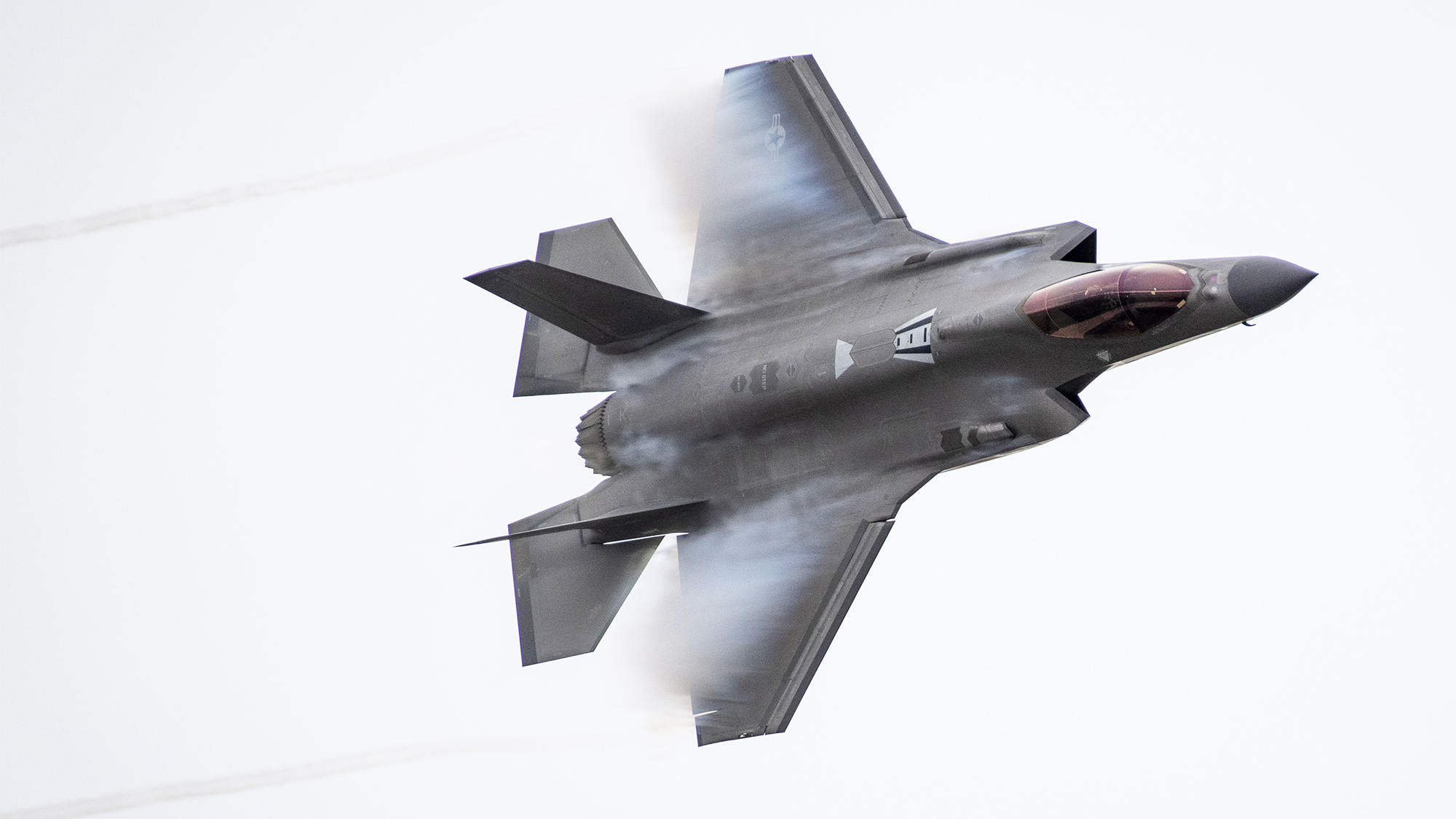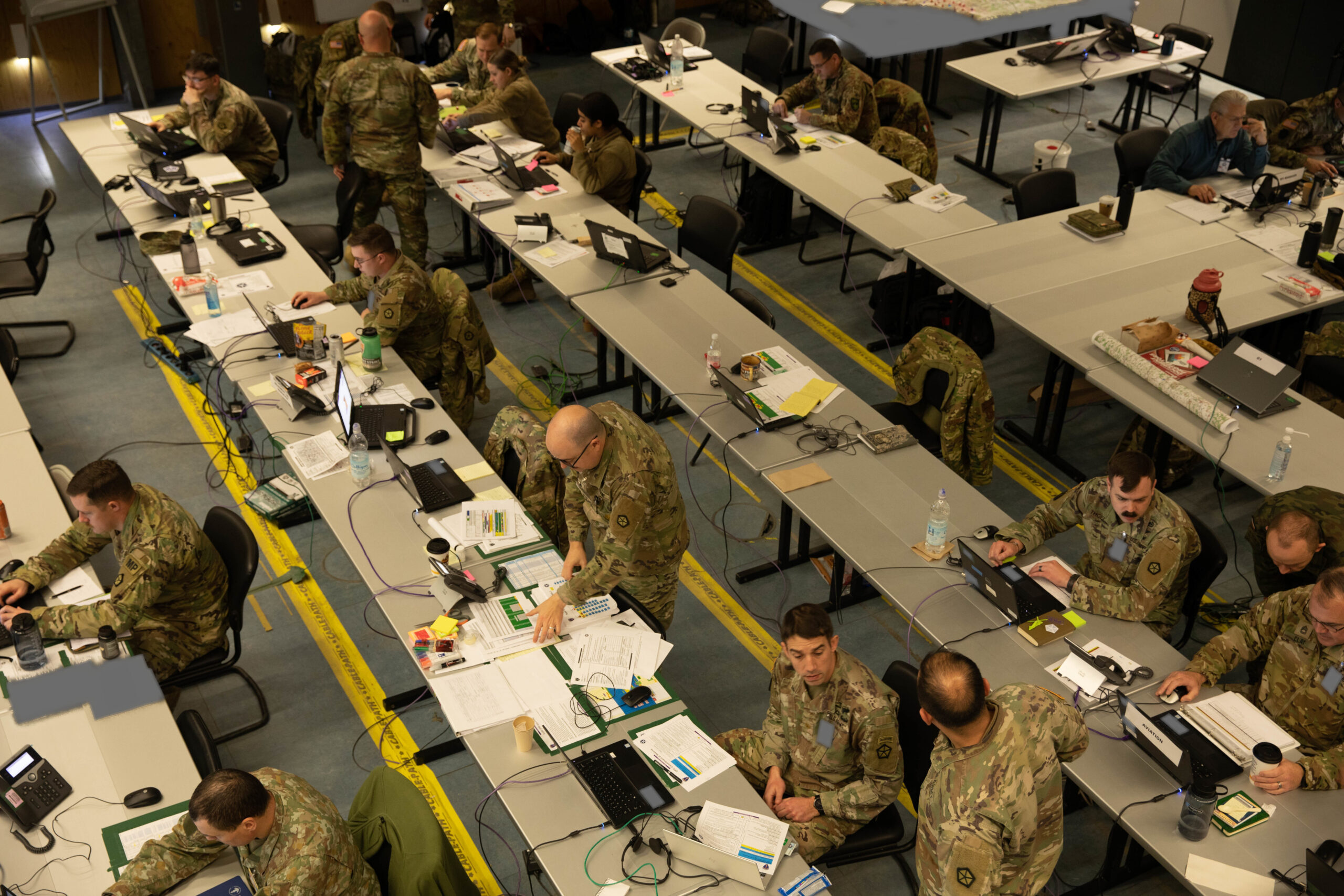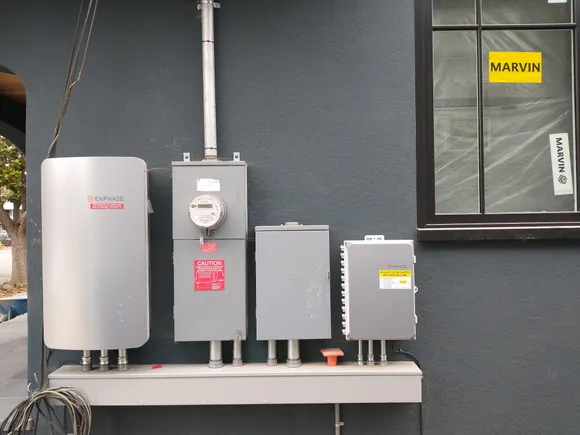Fear and loathing for truckload earnings
Q1 earnings season is upon us, with early results pointing to continued degradation in truckload carriers’ financial health. Wisconsin-based Marten Transport released its Q1 earnings on Wednesday, but with publicly traded companies timing is everything. The post Fear and loathing for truckload earnings appeared first on FreightWaves.

Marten reports a Q1 slump as operating ratio deteriorates

Q1 earnings season is upon us, with early results pointing to continued degradation in truckload carriers’ financial health. Wisconsin-based Marten Transport released its Q1 earnings on Wednesday, but with publicly traded companies timing is everything. FreightWaves’ John Kingston notes, “The earnings, released midday Wednesday in an unusual move given that the stock market was open for business, saw declines in almost every major metric.”
A big metric truckload carriers use is operating ratio (OR), or the comparison of your costs to your revenue. In the case of Marten, OR decreased in its truckload, dedicated, intermodal and brokerage segments. Truckload fell to 100.3% compared to 99.5% last year. Dedicated, viewed as a safer option compared to the boom-bust of one-way truckload, fell 500 basis points y/y from 87.1% to 92.2%. Intermodal, which remained over 100 OR last year, rose from 101.5% in Q1 2024 to 108.3%. The one bright side was Marten’s brokerage segment, which fell 110 bps y/y to 93.5%.
The earnings release also showed a shrinking fleet, with Marten’s total tractor count down to 3,040 compared to 3,406 a year ago. Diving further showed Marten’s truckload tractor count fell from 1,830 to 1,670 while dedicated declined from 1,459 to 1,262 tractors.
Executive Chairman Randolph Marten noted in the release that the company’s earnings continued to be pressured by the duration and depth of the freight market recession, paired with overcapacity and weak demand. The tariff uncertainty added further woes, with Marten noting the company remains focused on minimizing the impact of U.S. and global economies from trade policy volatility. Marten’s plan to address these challenges comes from organic growth and getting fair compensation for their premium services.
Midwest states test autonomous truck platooning

Dublin, Ohio-based Ease Logistics is part of a collaboration between the Ohio Department of Transportation and the Indiana Department of Transportation aimed at testing truck automation technologies. FreightWaves’ Steve Barrett writes, “A DOT grant is partially funding the $8.8 million, multiyear project, which is gauging different levels of automation in truck fleets.” The route involves a 175-mile stretch between Columbus, Ohio, and Indianapolis, with two tractor-trailers participating in the test.
“This technology offers a complete safety system with redundancies that could make roadways safer,” Ohio State Highway Patrol Capt. Chris Kinn said. “Unlike human drivers, automated vehicles do not drive impaired, text while driving, fall asleep at the wheel or recklessly speed. The goal of this technology is to take the human error out of the safety equation.”
The trucks are equipped with Kratos Defense platooning technology linking them electronically, with a human driver in the lead vehicle being able to control the speed and direction of the second truck. DriveOhio noted that the tech enables the autonomous follower truck to precisely follow the path of the lead truck. For law enforcement agencies worried about trucks following too closely, the two trucks are equipped with purple lights in the cabs to notify them they’re electronically linked.
Market update: Cass March data suggests freight volumes in tariff crosshairs

Freight audit and payment provider Cass Information System released on Monday its March Cass Freight Index. The shipments component saw a slight narrowing in year-over-year declines, with March down 5.3% y/y compared to 5.5% y/y in February. Seasonally adjusted month over month saw shipments fall 2.1% compared to a 4.9% gain in February due to severe January weather. Pre-tariff shipping was also cited for the higher February numbers. Freight expenditures, which measured the total amount spent on freight, rose 2.8% m/m in March. Looking at y/y comps, the decline narrowed to 2% from a decline of 4.6% in February.
The recent 90-day pause on most reciprocal tariffs is expected to lead to more pre-tariff shipping in Q2 but will be counterbalanced by adverse effects from the extreme China tariffs. Tim Denoyer, vice president and senior analyst at ACT Research, wrote in the report, “Volumes may also be temporarily supported in the coming months as consumers scoop up pre-tariff goods before prices go up. But thereafter, the trade war is likely to extend the for-hire freight recession as higher prices reduce goods affordability and consumers’ real incomes.”
Looking ahead, the report notes a frequently asked question is what proportion of freight is international trade, as the Cass Data focuses on domestic data. Denoyer notes, “Even with good border and port data, it’s tough to pinpoint.” To take a stab at that question, ACT asked the academic community. Jason Miller, professor at Michigan State, estimates the answer is in the range of 20% to 25%.
In the meantime, Denoyer says freight is caught up in the trade war, adding, “We expect a few more months of brisk demand for pre-tariff goods, followed by a tariff adjustment period with lower goods demand. It’s been 39 months since the first y/y decline of this cycle, so a recovery can only be so far away. But freight is very much in the crosshairs of the trade war.”
SONAR spotlight: Dry van optimism gives way to spring doldrums

Summary: Tariff-related uncertainty continues to weigh on the dry van segment, which, compared to the previous year, is in a better pricing situation despite a deterioration in load tender volumes. The past week saw dry van outbound tender rejection rates fall 33 basis points from 5.52% on April 7 to 5.19%. Dry van outbound tender volumes were mostly flat w/w, up 0.76 points, from 6,992.55 points to 6,993.31 points.
A bump in dry van spot rates the first week of April has given way to a slump, with the SONAR National Truckload Index 7-Day average falling 6 cents per mile all in from $2.29 on April 7 to $2.23. Spot market linehaul rates also fell, down 6 cents per mile from $1.73 to $1.67. For linehaul rates, fuel costs are based on the average retail price of diesel fuel and fuel efficiency of 6.5 miles per gallon. The formula is NTID – (DTS.USA/6.5).
For fleets languishing in this tough operating environment, one sign of relief is the downward movement in the average retail price paid for diesel fuel. DTS fell 3 cents per gallon w/w from $3.65 to $3.62. Compared to this time last year’s price of $4.07 per gallon, diesel prices are 45 cents per gallon lower. A single fuel tank for a Class 8 tractor averages between 120 and 150 gallons, with some fleets opting for two tanks at around 300 gallons. A 45-cent-per-gallon fuel savings can give fleets anywhere between $54 in savings for a 120-gallon tank to $135 for a 300-gallon tank.
If a tractor runs 2,000 miles per week and has an engine at the low end of fuel economy at 6.5 mpg, it may fuel one or two times a week including extra fuel loss from idling. Doing the math, 2,000 miles divided by 6.5 mpg yields approximately 307 gallons, with a 300-gallon tank fueling around once a week and a 120-to-150-gallon tank at least twice a week. Over the course of a year, that can add up to between $5,616 and $7,020 extra net income per truck.
The Routing Guide: Links from around the web
NIMBY, other concerns limit state acquisition of land for public truck parking (Overdrive)
FMCSA OKs exemptions for pulsing brake lights for 2 truck fleets (FreightWaves)
Trucking companies spark healthier lifestyles for drivers (Commercial Carrier Journal)
Freight fraud everywhere, but Truckstop CEO asks: Is anybody going to jail? (FreightWaves)
Tariff Impact Analysis on Automakers in the United States (Center for Automotive Research)
Breaking from the FreightTech AI pack: Companies make their case at TIA meeting (FreightWaves)
Most recent episode
Like the content? Subscribe to the newsletter here.
The post Fear and loathing for truckload earnings appeared first on FreightWaves.







































































![[Podcast] Behind the Breakthroughs: How Almac Powers Clinical Trial Success with Care](https://imgproxy.divecdn.com/5lAJkli_KcGt1FSsw4EaegjgP76IHREqYEWbhNBJOXw/g:ce/rs:fit:770:435/Z3M6Ly9kaXZlc2l0ZS1zdG9yYWdlL2RpdmVpbWFnZS9CaW9QaGFybWFEaXZlXzEzNDZfeF83MjlfQXJ0d29yay5qcGc=.webp)









































































































